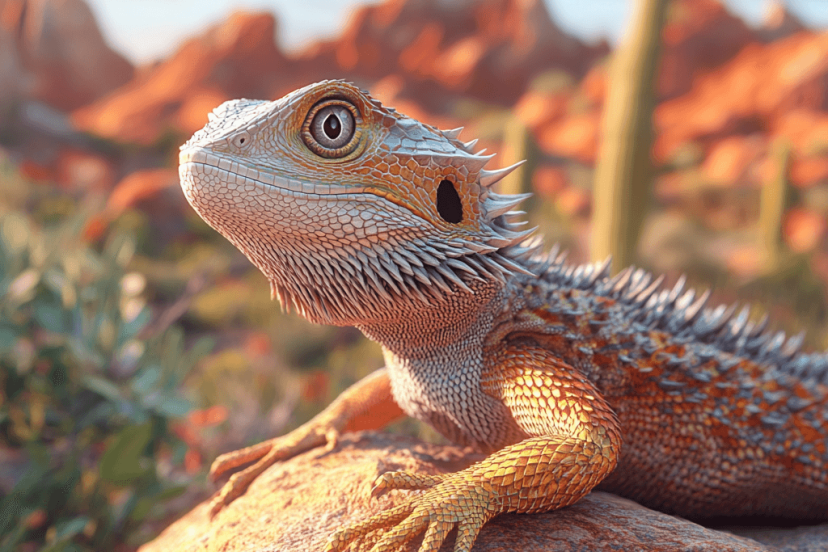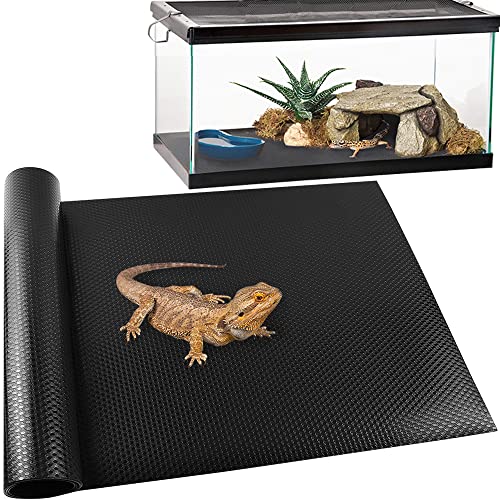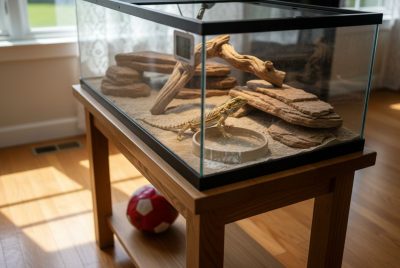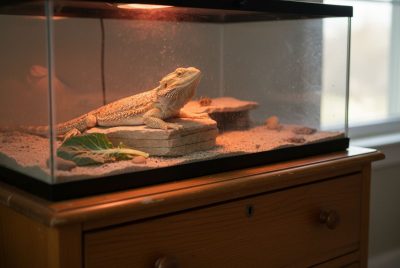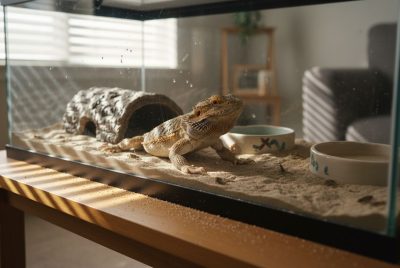Bearded Dragon Zero Morph: Complete Care Guide
The Zero Bearded Dragon morph is one of the most striking and unique types of bearded dragons you can find. With their smooth, patternless appearance that often resembles albino reptiles, Zero Bearded Dragons are growing in popularity. However, this morph requires special care to thrive. In this comprehensive guide, I’ll cover everything you need to know about the Zero Bearded Dragon, from their genetics and appearance to habitat, diet, and health care.
What Is a Bearded Dragon Zero Morph?
A Zero Bearded Dragon is a specific morph that lacks any visible pattern or coloration. They are typically pale, almost albino-like, and have smooth skin, making them visually different from the standard bearded dragon. While their care needs are similar to other bearded dragons, some unique considerations apply to this morph.
The Genetics Behind the Zero Morph
Understanding the genetics behind the Zero Bearded Dragon is essential for those considering breeding or simply curious about this special morph.
Understanding Recessive Traits
The Zero morph results from a recessive genetic trait, meaning both parents must carry the Zero gene for their offspring to express it. This genetic makeup makes Zero dragons relatively rare compared to other morphs, contributing to their higher price and desirability among enthusiasts.
Why Zero Morphs Are So Popular
Zero Bearded Dragons are highly sought after due to their unique, patternless appearance and pale skin. Their striking looks, combined with the fact that they’re still relatively uncommon, make them a favorite among reptile collectors and breeders.
Appearance and Characteristics of Zero Bearded Dragons
Zero Bearded Dragons stand out from other morphs thanks to their distinctive look and some subtle differences in behavior and physical traits.
Albino-Like Appearance
One of the most noticeable features of a Zero Bearded Dragon is its lack of pigmentation. Many people mistake them for albinos due to their pale skin, but they are not true albinos as they do not lack melanin completely. Instead, they simply have no patterns or markings, giving them a sleek and smooth appearance.
Differences Between Zero and Other Morphs
While most bearded dragons have some form of patterning or coloration, Zero morphs are completely patternless. Their pale, creamy appearance can make them look delicate, but they share the same hardy nature as other bearded dragon morphs.
Setting Up the Perfect Habitat for a Zero Bearded Dragon
Creating the right environment for your Zero Bearded Dragon is critical for their health and happiness. Let’s explore how to set up an ideal habitat.
Tank Size and Environment
Zero Bearded Dragons, like other bearded dragons, need ample space to roam and bask. For juveniles, a 40-gallon tank is sufficient, but adults should be housed in at least a 75-100 gallon tank. A spacious environment with climbing spots, basking areas, and hides is essential for mental and physical stimulation.
Temperature and Lighting Requirements
Temperature plays a significant role in your Zero dragon’s well-being. The basking spot should reach 100-110°F, while the cooler side of the tank should be around 75-85°F. UVB lighting is necessary to help your dragon metabolize calcium and avoid metabolic bone disease. However, since Zero morphs have lighter skin, they might be slightly more sensitive to intense lighting. Providing shaded areas within the tank is a good idea.
Choosing the Right Substrate
For Zero Bearded Dragons, choose a safe and easy-to-clean substrate. Reptile carpet, paper towels, or slate tiles are excellent options, as they prevent impaction (a condition where loose substrate like sand is ingested and blocks the intestines). Avoid loose substrates, especially for young dragons.
Feeding Your Zero Bearded Dragon
Diet is a vital part of your dragon’s care. Here’s how to ensure your Zero Bearded Dragon gets the nutrition they need.
Insects for Juveniles
Juvenile Zero Bearded Dragons require a protein-rich diet, consisting primarily of insects such as crickets, dubia roaches, and mealworms. These insects should be appropriately sized to avoid choking, and gut-loaded (fed nutritious food) before feeding them to your dragon.
Vegetables for Adults
As Zero Bearded Dragons mature, their diet should shift to include more vegetables. Offer a mix of leafy greens like collard greens, mustard greens, and dandelion greens. Fresh vegetables should be available daily, with insects served as occasional treats.
Supplements and Hydration
Dust your dragon’s food with calcium supplements (with vitamin D3) about 3-4 times a week to prevent metabolic bone disease. Additionally, ensure that your dragon stays hydrated by providing fresh water in their tank and misting their vegetables.
Health Concerns for Zero Bearded Dragons
While Zero Bearded Dragons are generally robust, they do have some health concerns specific to their morph.
Sensitivity to UV and Light
Due to their lighter pigmentation, Zero Bearded Dragons might be more sensitive to intense UVB light. Make sure to provide shaded areas in their enclosure, so they can regulate their exposure to the light and avoid overexposure.
Common Health Issues
Zero Bearded Dragons can suffer from health issues like impaction, respiratory infections, and metabolic bone disease. Regular check-ups with a vet and providing a proper diet and environment are essential to prevent these common ailments.
Handling and Socializing Your Zero Bearded Dragon
Zero Bearded Dragons are known for their docile and friendly nature, making them great pets for handling and interaction.
Best Practices for Handling
Always handle your Zero dragon with care, supporting their body fully and moving gently. Start with short handling sessions and gradually increase the duration as your dragon becomes more comfortable.
Building Trust and Comfort
Zero dragons, like other bearded dragons, require time to build trust with their owners. Spend time near their tank, offer treats by hand, and handle them regularly to strengthen your bond.
Shedding in Zero Bearded Dragons
Shedding is a natural process that all reptiles go through, and Zero Bearded Dragons are no exception.
Shedding Frequency
Young Zero Bearded Dragons tend to shed every few weeks as they grow, while adults shed less frequently, usually a few times a year. The pale skin of a Zero morph can make shedding more noticeable.
Helping Your Dragon Through Shedding
To assist your dragon during shedding, offer warm baths and ensure their enclosure has the right humidity levels. Never force shedding skin off—let it come off naturally to avoid damaging their sensitive skin.
Breeding Zero Bearded Dragons: What to Consider
Breeding Zero Bearded Dragons requires careful consideration, especially when it comes to ethics and genetics.
Ethical Breeding and Best Practices
It’s essential to practice ethical breeding by ensuring that the dragons you breed are healthy and genetically diverse. Overbreeding or breeding dragons with known health issues can result in offspring with complications.
Zero Morph Breeding Challenges
Breeding Zero dragons can be tricky due to their recessive genetics. It’s important to work with experienced breeders to ensure that the offspring are healthy and that the genetic lines remain strong.
Conclusion: Caring for Your Zero Bearded Dragon
Caring for a Zero Bearded Dragon can be an incredibly rewarding experience. Their striking, patternless appearance makes them stand out, but they require specific attention to habitat, diet, and overall care. By understanding the unique characteristics of this morph, including their sensitivity to light and skin care during shedding, you can ensure your dragon remains healthy and thrives in your care. Zero Bearded Dragons are known for their calm temperament, making them excellent pets for both new and experienced reptile owners.
Ensuring proper lighting, maintaining an optimal diet, and handling them regularly to build trust are key components of keeping your Zero Bearded Dragon happy and healthy. Additionally, ethical breeding and understanding their genetics help keep this beautiful morph strong and healthy for future generations.
FAQs
- What makes a Zero Bearded Dragon different from other morphs?
Zero Bearded Dragons are unique due to their completely patternless and pale appearance. They lack the typical patterns or colors found in other bearded dragon morphs, giving them an almost albino-like look. - How often should I feed my Zero Bearded Dragon?
Juveniles should be fed 2-3 times daily, focusing on protein-rich insects, while adults can be fed once daily or every other day with a diet that includes more leafy greens and vegetables. - Do Zero Bearded Dragons require special lighting?
Yes, like other bearded dragons, they need UVB lighting to prevent metabolic bone disease. However, because of their lighter skin, they may be more sensitive to intense lighting, so providing shaded areas in their enclosure is important. - How can I help my Zero Bearded Dragon during shedding?
Offer warm baths and mist their enclosure during shedding periods to help soften the skin. Ensure proper humidity levels and never forcefully remove shedding skin. - Can I breed my Zero Bearded Dragon with other morphs?
Yes, but ensure that ethical breeding practices are followed. It’s crucial to maintain genetic diversity and avoid overbreeding, which can lead to health issues.
By following these tips and insights, you’ll be well-equipped to provide the best care for your Zero Bearded Dragon, ensuring a long and healthy life for your beautiful, unique pet.

